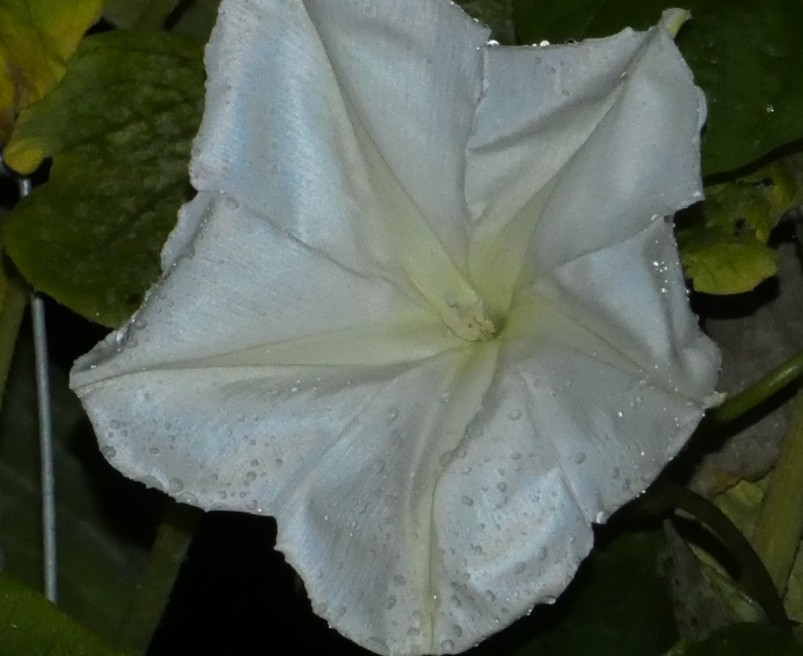Many years ago, I grew a weedy specimen of Ipomoea alba up a pea stick in a pot indoors, and probably stressed by its conditions, it flowered. A great white trumpet flower on a plant a foot high.
On and off since then I have grown moonflowers, but their flowering for me has remained elusive. I have grown plants both outside, and in a greenhouse over the summer, to no avail. This year, with the heat we had, I thought something surely must happen.
In amongst the squashes, in enriched but mole tunnelled compost it grew. By July, the heart shaped leaves and twining stems were away up the squash climbing frame. Then, in late summer, buds like small-arm maces started to form. Only four, but that was enough for me. By early September, at last, the buds started to lengthen. They must flower soon or their time would be past, cooling nights would put paid to them.
Meanwhile, on social media, people were posting pictures of their triumphant UK-grown moonflowers in all their glory.

On the evening of the 7th September, one bud was untwisting and plumping, I thought, this is the night! And so it was. By 8:00pm a shining satiny flower was nearly fully open, in the dark, as a light drizzle fell. A delicious scent just discernible. How lovely it must be on a warm summer evening.
Writer Beverley Nichols encountered moonflowers in Chennai (Madras), India, during WW2.
“Their fragrance could not be caught in words, but to me it suggested a blend of incense and the peel of fresh lemons.”

So, here we are next morning, all over, finished. Two more buds opened, the fourth simply withered away.
Native to warmer parts of the Americas, but grown widely elsewhere, moonflowers are not hard to get going. The seeds are satisfyingly large, easy to push into pots of compost. Kept on a light windowsill in a covered propagator in spring, the huge twin leaves soon heave themselves up, erupting dramatically before the first shoot extends to twine and climb. Chiltern Seeds have normally been my seed source. Good luck!

